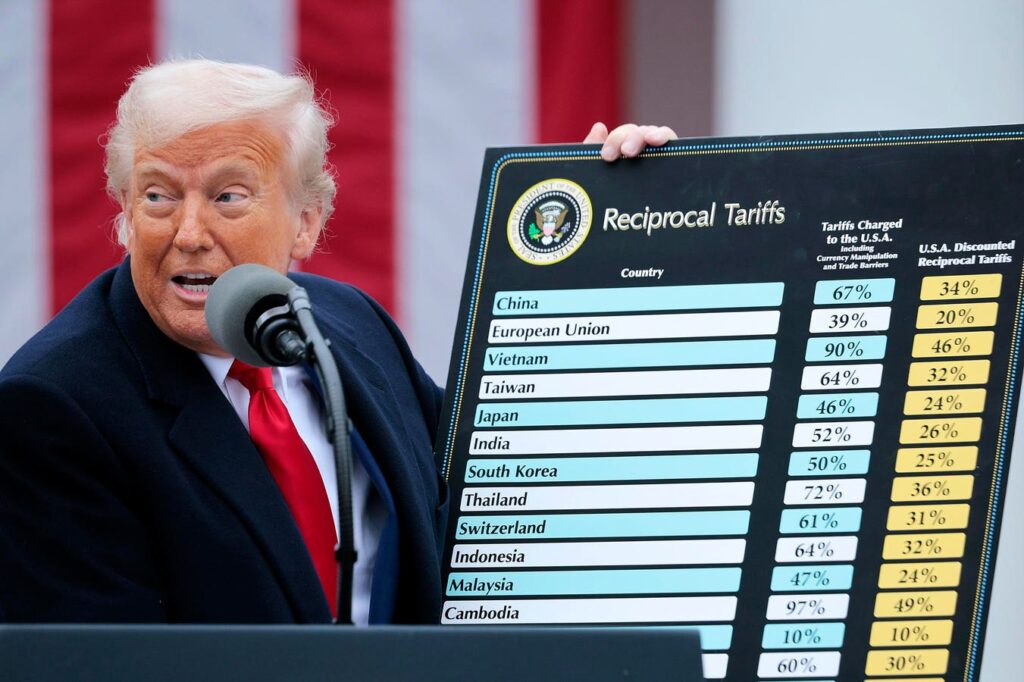President Trump appears to be accelerating the economic split between the U.S. and China by the use of tariffs (https://www.nytimes.com/2025/04/10/business/us-china-tariffs-trade-war.html) – a sharp reversal of decades of deepening ties that began with President Nixon. While American consumers benefited from lower prices, the long-term consequences have been profound – a massive transfer of wealth overseas, the erosion of U.S. manufacturing, and mounting government debt that future generations will be forced to bear.
How Entrepreneurs can Benefit
The global economic landscape is undergoing a massive realignment – and with it comes a rare window of opportunity. Here are 6 suggestions for entrepreneurs to position themselves to profit from this tectonic shift.
#1. Enter the Right Game at the Right Time
Imitate billion-dollar entrepreneurs who leveraged the potential of emerging industries and jumped in at the right time:
- Medical Electronics: Earl Bakken co-founded Medtronic and capitalized on the emerging medical electronics industry (Bootstrap to Billions at www.dileeprao.com).
- Big-Box Retail: Sam Walton (Walmart) and Dick Schulze (Best Buy) capitalized on big-boxes.
- PCs: Bill Gates (Microsoft) and Michael Dell (Dell) shaped the emerging PC industry.
- Telecommunications: Ralph Roberts (Comcast) pioneered cable TV when it was emerging.
- Internet 1.0: Jeff Bezos (Amazon.com) laid the foundation for today’s digital economy.
- Internet 2.0: Mark Zuckerberg (Facebook) took advantage of the linking phase of the Internet.
- Internet 3.0: Brian Chesky (Airbnb) disrupted hospitality by linking space to demand.
Now with rising tariffs, onshoring trends, and automation reducing the labor cost gap, a new game is beginning. Entrepreneurs who understand these shifts can lead the next generation of unicorns – especially by building technology and automation unicorns to help the U.S. reduce reliance on foreign manufacturing.
#2. Evaluate the Final Form of Tariffs. Do Not Guess.
Entrepreneurs need to know the shape of the new economic order. Unlike financial speculators who mostly bet on short-term trends with other peoples’ money, non-flipping entrepreneurs try to build lasting ventures based on long-term realities. That’s why timing matters. Billion-Dollar Entrepreneurs are rarely first movers. In fact, only about 11% of dominating ventures were first movers (https://www.forbes.com/sites/dileeprao/2017/01/24/first-movers-seldom-win-first-dominators-mainly-do/?sh=4fb7713d19a1) – the rest, from Bill Gates to Jeff Bezos, were smart followers who improved on early models and scaled them better. This means imitating and improving strategies that you think have potential.
#3. Know Your Trend – Evolutionary or Revolutionary.
Not all trends are created equal – and recognizing the kind of trend you’re dealing with is crucial. Trends generally fall into two categories:
- Evolutionary Trends: These are gradual shifts – think better, faster, or cheaper versions of what already exists. Incumbents usually have the edge here. Can you beat them? If yes, go for domination. If not, carve out a niche or build to sell. Success here often comes from timing and positioning – not just innovation.
- Revolutionary Trends: These are game changers – technologies or shifts that redefine the market and the industry. Revolutionary trends become disruptive when the emerging trend is more competitive and familiar, and the main market segments shift to the new. The business model for these trends is critical – more art than science. Stay flexible. Observe how markets and competitors are responding. Test different models early. Move fast when you spot what works – with VC, if you need the crutch of capital, or without it as was done by about 76% of billion-dollar entrepreneurs (see The Truth About VC by Dileep Rao, Ph.D.)
#4. Find or Pivot to the Right Position.
To succeed in an emerging trend, you need 2 essential ingredients:
Gaston Taratuta bootstrapped Aleph into a unicorn by mastering how to sell the technology and positioned his company to sell outside the U.S. (https://www.forbes.com/sites/dileeprao/2024/01/24/bootstrapping-unicorns-7-finance-smart-insights-from-gaston-taratuta/). Sam Walton (Walmart) entered the big-box retail trend as it emerged and positioned himself in rural America – before dominating the rest of the country. Enter the trend as soon as it emerges, position your venture, bootstrap, test business models, and push for lift-off – without VC. Skills get you in. Passion keeps you in. Positioning helps you win.
#5. Takeoff Without VC.
VC can fuel growth – but VCs are an impatient group. If your promises don’t deliver, they’ll replace you or abandon you. To take off without VC, entrepreneurs must know how to grow with internal cash flow like Dell did (https://fortune.com/2024/03/25/michael-dell-technologies-generative-ai-servers-storage-neural-processor-latitude/), use strategic bootstrapping, and consider non-controlling equity and debt financing, plus stage-wise venture capital — when VCs aren’t a risk but an asset.
#6. Flip the Script – Let VCs Pitch to You.
Once you’ve proven your strategic edge and leadership potential, VCs will start knocking. That is what happened to billion-dollar entrepreneurs like Jan Koum, Jeff Bezos, and Mark Zuckerberg. This is when you get to decide: Do you need VC to grow faster, or can you dominate without it? Michael Dell decided he could dominate without VC. Bill Gates chose to take a small amount of VC on his own terms, primarily to add “gray hair” to his board – not to hand over the reins (https://www.quora.com/Who-are-the-venture-capitalists-who-invested-in-Microsoft).
The best founders build something so compelling that VCs chase them. When that happens, you get to choose your partner, the terms, and the timing. And to control your venture and the wealth you create.
MY TAKE: Strike while the iron is hot. This could be a rare chance to dominate the next wave of applying new technologies and new business models to a new economic order. Financial speculators, or flipping founders, may gamble on short-term trends. But the unicorns will be built by entrepreneurs who play long and build smart. If President Trump follows through on his strategy, the iron won’t just be hot – it’ll be molten. This shift could unlock massive opportunities for entrepreneurs who are bold enough to act, smart enough to wait for clarity, and strategic enough to seize the moment.
Read the full article here











